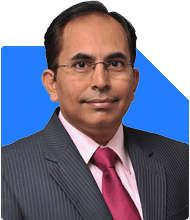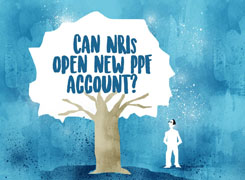30-Year-old making 52K/month - Am I saving enough for retirement?
Ramalingam Kalirajan |10194 Answers |Ask -Follow
Mutual Funds, Financial Planning Expert - Answered on Jul 31, 2024
He has an MBA in finance from the University of Madras and is a certified financial planner.
He is the director and chief financial planner at Holistic Investment, a Chennai-based firm that offers financial planning and wealth management advice.... more

I am 30 year old and my monthly income is 52k from which rs5800 goes to cpf and rs5800 goes to vpf. Apart from this i have lic premium of 46k yearly for 16 years and i have completed 5 premium of lic. Recently i started sip of 2k in hdfc nifty 50 index fund. Am i got handsome money at retirement. Plz suggest me
Monthly Income: Rs 52,000
CPF Contribution: Rs 5,800 per month
VPF Contribution: Rs 5,800 per month
LIC Premium: Rs 46,000 annually (for 16 years, 5 premiums paid)
SIP Investment: Rs 2,000 in an index fund
Evaluating Your Retirement Plan
CPF and VPF Contributions
Regular Savings: Your CPF and VPF contributions are good for long-term savings.
Security: These contributions provide a safe and secure return.
LIC Premiums
Current Status: You've paid 5 premiums out of 16.
Reconsideration: Assess the return on your LIC policy. Traditional LIC policies often offer lower returns.
SIP in Index Fund
Current Investment: Rs 2,000 per month in an index fund.
Disadvantages of Index Funds: They may not provide the best returns due to lack of active management.
Recommendations for Better Returns
Increase SIP in Mutual Funds
Actively Managed Funds: Consider investing in actively managed funds. They have the potential for higher returns.
Benefits of Regular Funds: Investing through an MFD with a CFP credential ensures professional management and guidance.
Review Your LIC Policy
Performance Check: Evaluate the performance of your LIC policy.
Alternative Options: If the returns are low, consider surrendering the policy and reinvesting the proceeds into mutual funds.
Diversify Your Investments
Equity Mutual Funds: Increase your exposure to equity mutual funds for long-term growth.
Debt Funds: Consider adding debt funds for stability and moderate returns.
Planning for Retirement
Setting Clear Goals
Retirement Corpus: Define how much money you need at retirement. This helps in planning your investments accordingly.
Regular Review: Review and adjust your investment portfolio regularly to stay on track with your goals.
Maximising Contributions
Increase SIP: Gradually increase your SIP contributions as your income grows.
Utilise Tax Benefits: Make the most of tax-saving investment options to reduce your tax liability and increase your savings.
Importance of Professional Guidance
Certified Financial Planner: Seek advice from a certified financial planner. They can provide tailored advice based on your financial situation and goals.
Final Insights
Regular Savings: Your CPF and VPF contributions are a good start.
Increase SIP: Shift focus to actively managed mutual funds for better returns.
Re-evaluate LIC: Consider if your LIC policy is giving good returns.
Professional Advice: Consult with a certified financial planner for a comprehensive plan.
Best Regards,
K. Ramalingam, MBA, CFP,
Chief Financial Planner,
www.holisticinvestment.in
You may like to see similar questions and answers below
Ramalingam Kalirajan |10194 Answers |Ask -Follow
Mutual Funds, Financial Planning Expert - Answered on May 16, 2024
Ramalingam Kalirajan |10194 Answers |Ask -Follow
Mutual Funds, Financial Planning Expert - Answered on Jul 10, 2024
Ramalingam Kalirajan |10194 Answers |Ask -Follow
Mutual Funds, Financial Planning Expert - Answered on Dec 27, 2024
Janak Patel |65 Answers |Ask -Follow
MF, PF Expert - Answered on Jan 29, 2025
Nayagam P P |9973 Answers |Ask -Follow
Career Counsellor - Answered on Aug 06, 2025
Dr Nagarajan J S K |2199 Answers |Ask -Follow
NEET, Medical, Pharmacy Careers - Answered on Aug 06, 2025
Dr Nagarajan J S K |2199 Answers |Ask -Follow
NEET, Medical, Pharmacy Careers - Answered on Aug 06, 2025
Nayagam P P |9973 Answers |Ask -Follow
Career Counsellor - Answered on Aug 06, 2025
Nayagam P P |9973 Answers |Ask -Follow
Career Counsellor - Answered on Aug 06, 2025
Nayagam P P |9973 Answers |Ask -Follow
Career Counsellor - Answered on Aug 06, 2025
Nayagam P P |9973 Answers |Ask -Follow
Career Counsellor - Answered on Aug 06, 2025
Nayagam P P |9973 Answers |Ask -Follow
Career Counsellor - Answered on Aug 06, 2025
Dr Nagarajan J S K |2199 Answers |Ask -Follow
NEET, Medical, Pharmacy Careers - Answered on Aug 06, 2025
Dr Nagarajan J S K |2199 Answers |Ask -Follow
NEET, Medical, Pharmacy Careers - Answered on Aug 06, 2025











.jpg)









